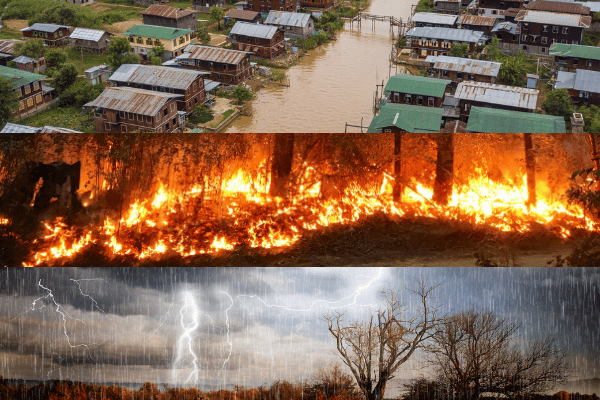The Air India flight from Delhi takes off at 2pm Indian time and arrives in Sydney at 7am the next morning. Passengers arriving these past few weeks have experienced two extremes of the weather – Delhi sweltering at 49 degrees, and Sydney freezing at 9 degrees, a difference of 40 degrees. Yes, different hemispheres and different seasons, but there is no denying that extreme temperatures and climate change are increasingly becoming a part of our everyday experience. Australia, especially NSW, has seen one natural calamity after another in recent years, with bushfires and floods. Who can forget the images of the South Coast community huddled on the beach waiting for the navy to evacuate them as the fires raged in their town and homes? Only months later, we saw footage of a flooded Lismore, with calls going out to anyone who owned a boat to get out there and rescue stranded residents (thankfully this call was soon rescinded). The two experiences exposed us to the opposite ends of extreme weather conditions. As this edition goes to print, we’re experiencing an icy cold wave, and it is expected to get colder and wetter than before.
Southeast Asia and its 1.5 billion population have suffered from soaring temperatures. Places like Delhi are experiencing heat waves with temperature ranges of 30 to 49 degrees and this in the month of May, with June expected to be drier and hotter. Wildfires are common and so is the devastation on animals and the farmers whose crops wither away in the heat. The bulk of the population cannot afford air conditioning and the day-to-day manual workers are exposed to the elements. The United Nations Intergovernmental Panel on Climate Change is concerned that life could literally become unbearable in South Asia before the end of the century. Temperatures could rise by up to 2.7 degrees Celsius, with disastrous effects on our glaciers.
It was not that long ago that the UN’s Climate Change Conference COP 26 took place in Glasgow, where governments agreed that climate change is real, and action needs to be taken. The challenge is balancing the demands of the near benefits to the benefits of the far away.
Over 130 countries signed up to a zero net emissions deadline of 2050, China of 2060. India has resisted the call to impose a deadline, as it believes that it is a victim of, and not a contributor to, climate change. Many of its citizens have been impacted by climate change, but it is aware that if it pushes for stronger climate change policies, its economic development will be hampered which in turn will affects millions of its citizens.
The debate on climate change seems to have stalled for now as the world focusses on the Ukraine-Russia conflict and the rising challenges of being denied Russian oil and gas. Whether that will push countries to look at cleaner forms of energy and accelerate the development of their own sources of clean energy, time will tell.
Meanwhile, those in South Asia who are on the forefront of the ravages of climate change are too busy surviving rather than starting a revolution, and those in other privileged countries have shown they can push political will at the ballot box.
READ ALSO: 6 books about the climate crisis that offer hope




